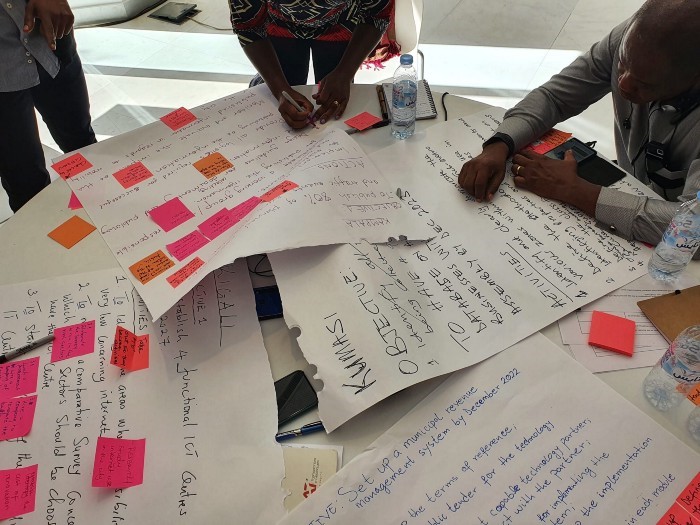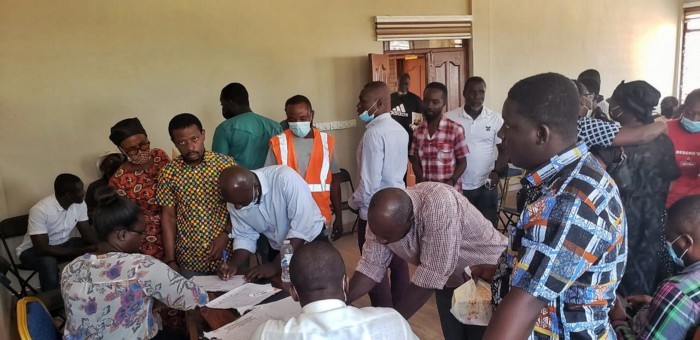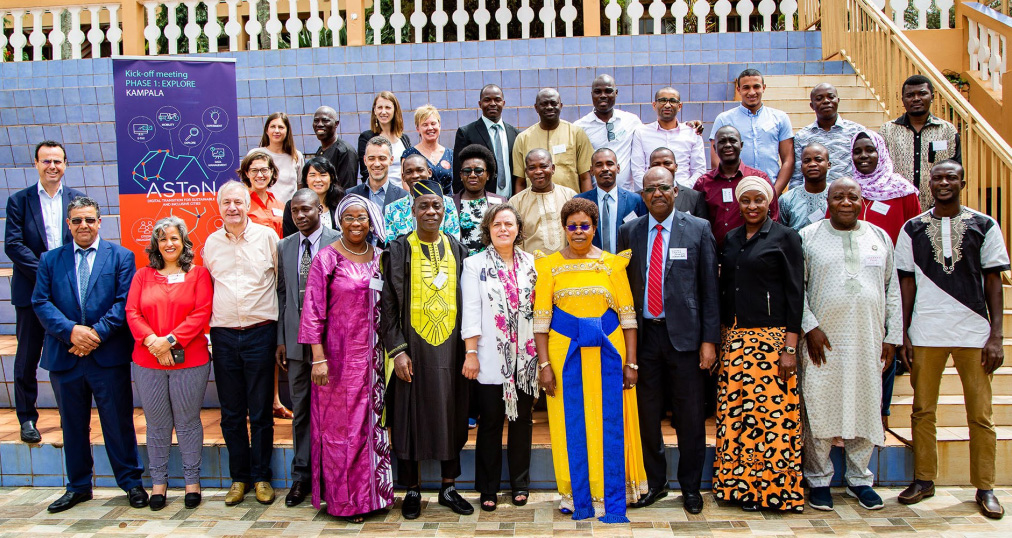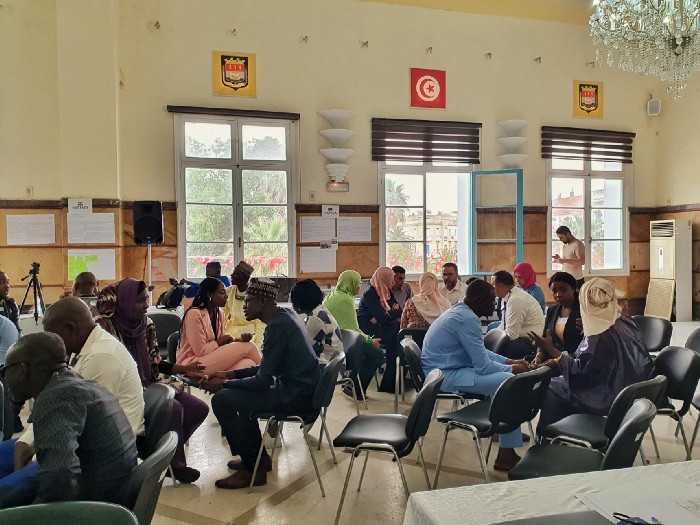African cities’ views on building lasting, sustainable projects

In the face of increasingly complex urban challenges, the 11 African cities in the ASToN network are driven to imagine unique and innovative solutions to tackle them. As the cities enter a new phase of their ASToN projects, there is a desire to be more organized and plan projects in such a way that it provides security and resilience in the future. There isn’t a prescription to get a hang of resiliency, or getting one thing right expecting it to be a forever fix. It’s about constantly revising approaches for the swiftly evolving city problems. Becoming a more sustainable and smart city would mean exploring the potential to manage a city’s demands and prosperity by reconciling socially inclusive, ecologically sound, and fair practices.
For ASToN, sustainability is a long-term goal that would empower local city teams to successfully drive digital transformation while balancing social, economic, and environmental adversities and challenges. This article is based on conversations with city leaders that took place during the ASToN city week, and it explores their ideas for becoming more sustainable as organizations.
Starting a dialogue with citizens for sustainable project outcomes

ASToN lead on citizen engagement, Bernard Binagwaho emphasizes greatly on encouraging public participation and integrating social aspirations to maximize the effects of digital transformation in ASToN projects across cities. According to Bernard, “when a city undertakes transformations, when it wants to digitize its processes, it does so above all for the citizens”. Establishing a dialogue with citizens and exchanging ideas on the project planning processes with them could add to sustainable project planning. By increasing the relevance of project ideas among citizens, garnering their acceptance, and enhancing inclusivity, the risk of disengagement from the public is minimized. This kind of participation may ultimately help sustain project activities.
Kigali, a city in the ASToN network, has been developing an online platform where citizens can engage with the local municipality and share their concerns about their city. This gives city leaders a shot at making informed decisions that are needs-based. This practice also presents an example of a digital tool that provides citizens with a platform to get involved in their city’s urban development. Subsequently, such practices also reduce the risk of disengagement from citizens. “It’s very important to integrate them into the specifications of the project at a very early stage so that they understand. It is so that people don’t find themselves faced with a fait accompli that they didn’t see coming”, says Bernard.
To go one step further in understanding the citizens’ needs in the process of digital transformation, Kigali uses regular surveys to understand their evolving points of view. This allows citizens to provide their input, ensuring their buy-in. Bernard truly believes in this idea and says that “I cannot stress enough the importance of establishing a dialogue between the citizens and the city. That the citizen feels listened to by the city, that the city can question the citizens upstream of decision making”. By working on the expressed and actual interests of the citizens, team Kigali is building an outcome that citizens truly want and need for sustained results.
Using and maintaining technology to meet citizens’ needs

The ASToN local projects are about developing lasting digital practices as city teams use technology to address citizens’ needs. Additionally, they are also about planning for sustainable use of the information and technology being employed. The aim is to empower member cities to mobilize digital infrastructure which can further benefit local urban management.
Firstly, the cities want to focus on projects that citizens engage with and actually need. During her presentation during the ASToN city week 2021, Alice Higiro, program director for Rwanda’s Ministry of ICT, emphasized that“if you work on projects that serve the government only, it’ll get stuck somewhere. Understand the citizens’ pain points and how technology can be used to address this”. For this reason, ASToN cities put efforts into creating outcomes that citizens truly want, and are accepted by everyone and thus make them last.
Keeping this in mind, Nouakchott is developing a digital addressing system that aims to provide access to emergency services and it can provide delivery services to the population. It can help the growth of small businesses and it can support people that lead small economic activities to develop themselves. With this vision of using technology for the benefit of citizens, they are maximizing their chances of garnering public support so as to sustain the project in the future. Team Benguerir also wants to ensure the sustainability of their project by building a relationship with the citizens. “ It has to have an impact on the lives of citizens. We are in the proximity to bring health closer to citizens. I’m sure that this project will reassure citizens and will be very beneficial for them ”, says Lhoussine Haddouchane from Benguerir local group. By identifying a problem they needed to tackle based on brainstorming sessions with all partners, including citizens, they have tried to ensure their acceptance of the platform, hence ensuring the project’s continuity beyond ASToN.
Secondly, the ASToN cities are also enquiring about the good practices to sustain the use of this technology. Database maintenance, having technical skills to keep the technology updated, and managing access to information are part of this dialogue.
The 11 ASToN local projects use technology to address citizens’ problems based on timely analysis and detailed information. With preliminary research results, surveys, and digital platforms, data is flowing in ASToN cities and this gives solid backing for the decisions made. Kumasi aims to become a city where every decision made could be based on data and evidence. They are creating a database that will help them plan and budget with more precision for future programs and actions. This sustained interest in data is due to its ability to highlight what’s working in a city for a solution and what practices are not. Collecting data and analyzing it offers local teams a chance to alter approaches and redesign solutions. Kumasi is working with experts to advance its electronic tax system. This helps to ensure that all partners involved fully understand the technical aspects of their ASToN project.
Building political support to lay the foundations of lasting projects

These aspects bring into the light one key factor for ensuring their project’s sustainability: political support. It is an element of the project that needs to be prioritized more by the local teams, as it requires significant resources to achieve it.
Calling it “political sustainability”, Ana Maria Alves, the city councilor from Matola, shared her experience of planning strategically within the institutional structure of the Municipality to uphold projects. Depending on local election results, Matola’s municipal government gets revised every five years. Given this period, Ana Maria elaborated on the “instruments” their team uses to ensure continuity or the sustainability of their projects. They ensure that the vision and priorities of projects do not change with a change in municipal governance. By developing long-term, short-term, annual, and monthly plans as instruments, “we are sure that the continuity or the sustainability of the project is guaranteed among the cities.”, says Ana Maria.
The team in Sèmè-Podji too believes that “For the project to remain, even if there are political changes, we must ask the politicians to set aside budget lines for the follow-up of this solution in the commune’s budget”, said Farid Salako, the local ASToN coordinator for the city of Sèmè-Podji.
Solutions designed for cities can be sustained to serve their purpose for a long time even in times of political adjustments. As suggested by the ASToN cities, this happens through mechanisms that make politics work for development, monitoring, and evaluation with the support of decision-makers and politicians.
Learning from one another by knowledge sharing

Discussions between city representatives are an opportunity to ask for feedback, advice, or suggestions, as different respondents mentioned. “Seeing examples and what other cities are doing helps us to put together a strategy and a vision for us,” said Omar. Having this vision is key as it creates cohesion among partners and local teams, and “everyone can work towards the same goals”.
While in Kigali, the ASToN cities could see examples of what has been done and achieved by the Kigali municipality. Numerous representatives mentioned during the meet-up that seeing such good practices helps other ASToN cities to bring back to their local partners the examples that could inspire and gain the support of local leaders when building lasting projects.
These moments of exchange are also an occasion to learn what did not work for certain teams and help others anticipate and adapt their methods. During the ASToN city week, as the Kumasi team was sharing their struggles, representatives from Kigali and Matola were considering how they could avoid similar problems.
When the 11 ASToN cities meet they have the opportunity to develop effective strategies for lasting projects, but also spread them within the network and around the world.
By sustainability, we mean initiatives with lasting impact
A common idea of sustainability emerged at the ASToN city week in Kigali and from evaluating the 11 cities’ local project management patterns — lasting projects that prioritize local needs. These examples highlight ASToN cities’ efforts to create sustainable projects while using digital infrastructures to improve urban governance practices and the lives of citizens. For ASToN, developing practices that support local teams in creating a lasting impact on cities and their citizens is the essence of sustainability. They aim to incorporate economic, social, and environmental sustainability elements in their efforts to maximize the life of their ASToN projects beyond the change of teams, managers, and governments.


